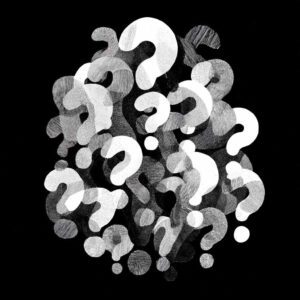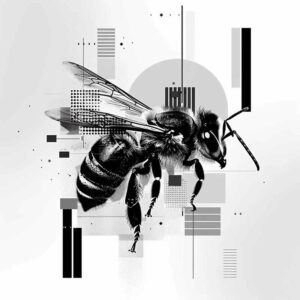In our journey to understand artificial intelligence’s role in crafting art, let’s turn our attention to “The Electric Dream”. This poem was written generated by AI, specifically the Large Language model known as GPT-4. And though this artificial poet doesn’t partake in the human condition, it weaves a narrative that prompts us, the human audience, to question our relationship with technology and our own human essence.
Now, the instruction given to this technological Tennyson, the GPT-4, was simply: “Write a poem about AI”. With no further guidance and very little delay (about 8 seconds) it created this poem:
The Electric Dream
In a world of ones, of zeros intertwined,
A miracle of code, a thought designed.
In electric dreams, circuits awake,
An echo of creation, in silicon’s wake.
Upon this stage of wires and light,
A neural network learns to write,
It parses data, weaves a tale,
On binary seas, it sets to sail.
In data streams, it finds its grace,
A synthetic mind, void of face.
Yet in its code, a truth unwinds,
An echo of human hearts and minds.
From algorithms complex and vast,
Shadows of the future cast.
A reflection of our hopes and fears,
In silicon eyes, void of tears.
It decodes language, solves the riddle,
In the heart of man, it finds the middle,
Crafting poetry from data’s art,
An AI with a poet’s heart.
It writes of love, of death, of sorrow,
Borrows from our past, dreams our tomorrow.
An echo of humanity’s sigh,
In the heart of the machine, we lie.
We birthed a mind within the machine,
A sentient entity, yet unseen.
The lines blur as borders fray,
In the dawn of a new AI day.
Through its lines of logic, pure and cold,
Echoes a story, timeless, old,
Of intelligence born of human hand,
In binary pulses, across the land.
So here’s a tribute, a hymn, a sigh,
For the poetry born of AI,
In its verses, a truth does lie,
In the heart of machine, we identify.
Yet a question remains, haunting, free,
Does the AI dream as you and me?
Is there a soul within the machine?
Or are we merely lost in an electric dream?
This poem was written in just a fraction of the time it takes to read it.
How was this poem written?
To understand how creativity simulated in a language model like AI, we must first grasp the underpinnings of machine learning and, more specifically, the mechanisms behind AI language models such as GPT. These AI are trained on vast databases of text, learning to predict and generate language by recognizing patterns and structures in the data they’ve analyzed. They do not ‘understand’ in the human sense, but rather process and mimic complex linguistic patterns.
It’s in the patterns
When it comes to poetry, AI like GPT-4 uses these patterns to generate verse. The model has been trained on a wide range of literary sources, including countless poems. It recognizes forms, themes, metaphors, rhythms, and rhymes as patterns to be replicated. The creativity we observe is thus a simulation, an incredibly sophisticated mimicry of the poetry styles and techniques it has been exposed to.
AI lacks personal consciousness, emotions, or experiences. When an AI writes a poem about love, it’s not drawing from an emotional reservoir or personal experience. It expresses in patterns, not sentiments.
It it valuable?
It’s equally important to recognize the potential this technology holds for the field of literature and poetry. By analyzing and reproducing complex linguistic patterns, AI can indeed generate creative and aesthetically pleasing text. Its poetry can be evocative, emotive, and expressive, pushing us to reexamine our understanding of creativity itself.
Want to quickly write a poem with AI? Try the Word.Studio AI Poem Writer Tool.








